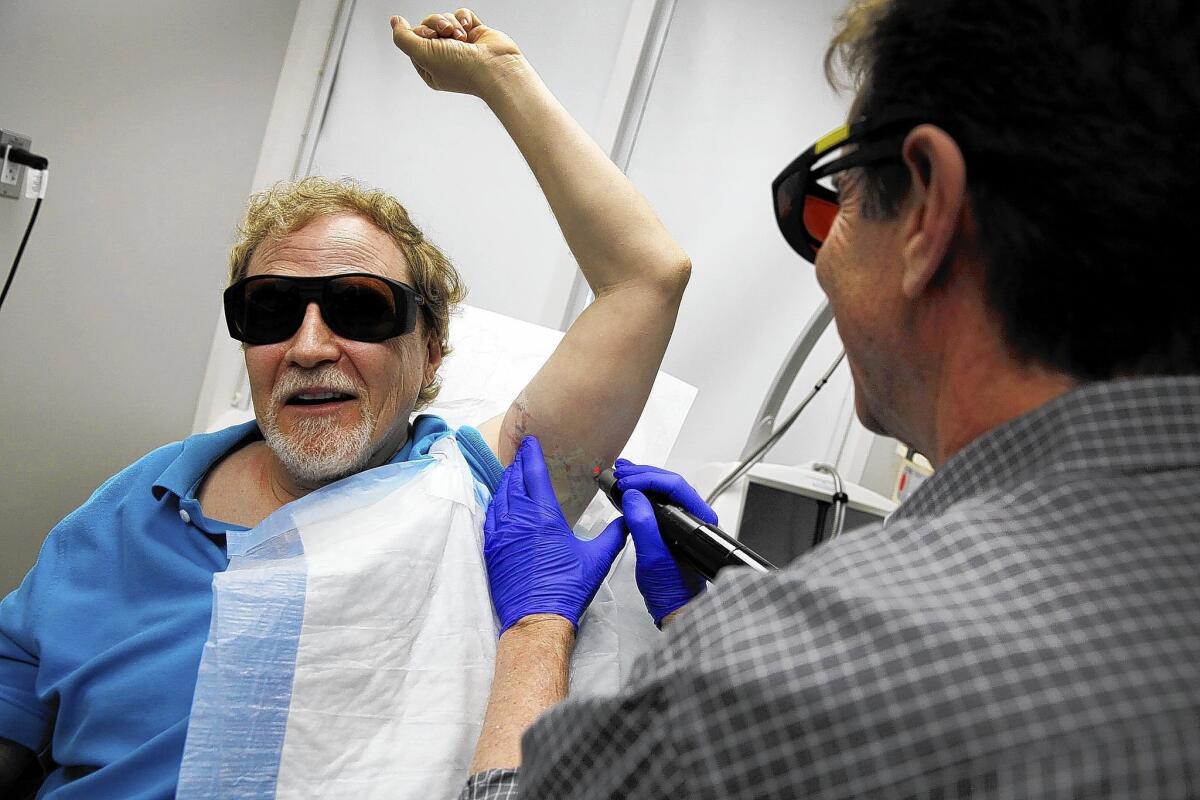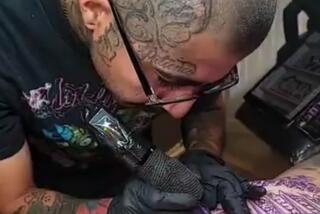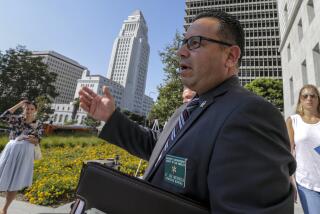Tattoo removal goes high-tech with laser procedures

- Share via
It’s almost summer. More skin will be visible, on and off the beach. And more tattoos. Will they be an inspiration? Or a warning?
Stuart Yellen wanted to be rid of his tattoo almost as soon as he got it, and a week later the ink began to drip down his arm. Eleven years later, there’s still something that looks like a bruise or a birthmark ringing his left arm.
“People should really think before they get tattoos; they don’t,” Yellen, 55, of Woodland Hills said after one of the monthly treatments he gets at UCLA.
An estimated 45 million Americans have a tattoo, and, says Dr. David Green, a dermatologist in Bethesda, Md., “the remorse rate with tattoos is very high. Some people sober up the next morning, some sober up 40 years later.”
Just as the hangover is worse than the partying, it’s tougher and more expensive to be rid of a tattoo than to get one.
Job requirements or life changes — the name of an ex inked on a shoulder, say — can make removal seem necessary, said Dr. Ray Jalian, a laser cosmetic dermatologist at UCLA Medical Center. And tattooed makeup — eyeliner or lip liner most frequently — doesn’t always work out as planned, he said.
“I see all the ones that have a smudge or a crooked lip line. I do a lot of hand-holding then,” Jalian said.
Yellen got his tattoo, a sort of tribal design, in Palm Desert, at a cousin’s urging. “I had apprehensions. I had second thoughts,” Yellen said. “I wasn’t drunk.”
Yellen is benefiting from the latest laser procedure, approved by the U.S. Food and Drug Administration in 2012. The picosecond technology delivers super-short energy bursts to the skin, substantially shorter than the industry standard nanosecond equipment, which replaced other techniques, including abrasion and surgery.
The new picosecond technique can cut the number of treatments in half, according to research that’s been done with a small number of patients, said Jalian, who said he performed two unpaid clinical trials, one for skin cancer and one for tattoos, for Cynosure, which makes the picosecond machine, called PicoSure. The PicoSure machine at UCLA cost $250,000 to $300,000, Jalian said.
Dr. Suzanne Kilmer of Sacramento, an expert in tattoo removal, said dermatologists had hoped the picosecond machine would be more color-independent, meaning it wouldn’t be more difficult to remove some colors than others. So far that isn’t the case, though she expects more advances.
Dr. Elizabeth McBurney, a dermatologist in Lafayette, La., said, “I think it is an advance, but I don’t think it’s a home run. It has marched us forward. But I am not sure it’s worth the price tag.” Like Green, she has yet to invest in a picosecond machine.
Patients can’t look to insurance, which will pay “the same amount to take it off that they did to put it on,” Green said wryly.
Removal runs an average of $2,000, Jalian said, and it’s difficult to know how many treatments a person will need, adding that the last 10% of the tattoo can be the hardest to remove. But he tells people to expect 10 to 20 treatments, usually.
“I tell people it’s quicker, hurts less and is cheaper to get one than to remove one,” he said.
Gary Lask, Yellen’s doctor, said all kinds of people have had it with their body art — executives, entertainers, parents who drag in their tattooed children. But with earlier versions of laser removal, he said, he’d sometimes talk people out of removal. “That cute little rose? I knew that would look better than the scar,” he said.
Easiest to remove are jailhouse-style drawings or letters — just one color, not much ink and not very deep into the skin. The more elaborate, multicolored tattoos, especially those with some white pigments, pose challenges, Jalian said.
In the treatment room at Ronald Reagan UCLA Medical Center, Yellen’s left arm is numbed before Lask directs the red light over the inked areas, the laser clicking as it goes. The treatments — done monthly, so the skin can heal — take just a few minutes and leave the skin slightly red and welty for a day or two, Lask said.
The laser shatters the ink particles into tiny bits that mostly spread harmlessly through the immune system into the body or sometimes emerge through the skin in a blister.
Yellen hopes one day to have his old arm back. As for his cousin? “He loves his tattoo, and his looks perfect.”






